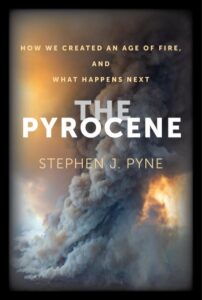 By now you’ve almost certainly been made aware of the devastating fires that struck Lahina as well as large portion of the rest of the Hawaiian island of Maui, and just within the past few days of this being written, wild land fires have also been emerging and rapidly expanding across the Canadian provinces of the Northwest Territories and British Columbia, as well as the U.S. state of Washington. As one who has lived in the Pacific Northwest all my live, it all seems so strange. As a boy I don’t recall such widespread and destructive fires being common, but now each successive year now seems to bring worse fires than the one before it.
By now you’ve almost certainly been made aware of the devastating fires that struck Lahina as well as large portion of the rest of the Hawaiian island of Maui, and just within the past few days of this being written, wild land fires have also been emerging and rapidly expanding across the Canadian provinces of the Northwest Territories and British Columbia, as well as the U.S. state of Washington. As one who has lived in the Pacific Northwest all my live, it all seems so strange. As a boy I don’t recall such widespread and destructive fires being common, but now each successive year now seems to bring worse fires than the one before it.
Like many people who pay attention to what are perceived as changes to the patterns of the world around us, I’ve been seeking answers to the rise of wild land fires and their levels of destruction over recent years. As part of this search I’ve turned to the remarkable To The Last Smoke series of books on the subject of wild land fires by Prof. Stephen J. Pyne. And while I very much recommend these, I also understand that at last count there are nine of them in the series, which is admittedly a fair bit of back-reading for anyone.
So for those who might like a single volume entry into Prof. Pyne’s research into the behavior of wild land fires and, perhaps more immediately important, his ideas regarding how to think about and understand the history and dynamics of fire, University of California Press recently published his book The Pyrocene; How We Created an Age of Fire, and What Happens Next.
Taking an admittedly long-range perspective on the history of fire and humans, Prof. Pyne examines the way humans long lived with fire, used it to change the world around them, and of particular importance to us today, how the “ancient relationships between humans and fire broke down when people began to burn fossil biomass—lithic landscapes—and humanity’s firepower became unbounded.”
